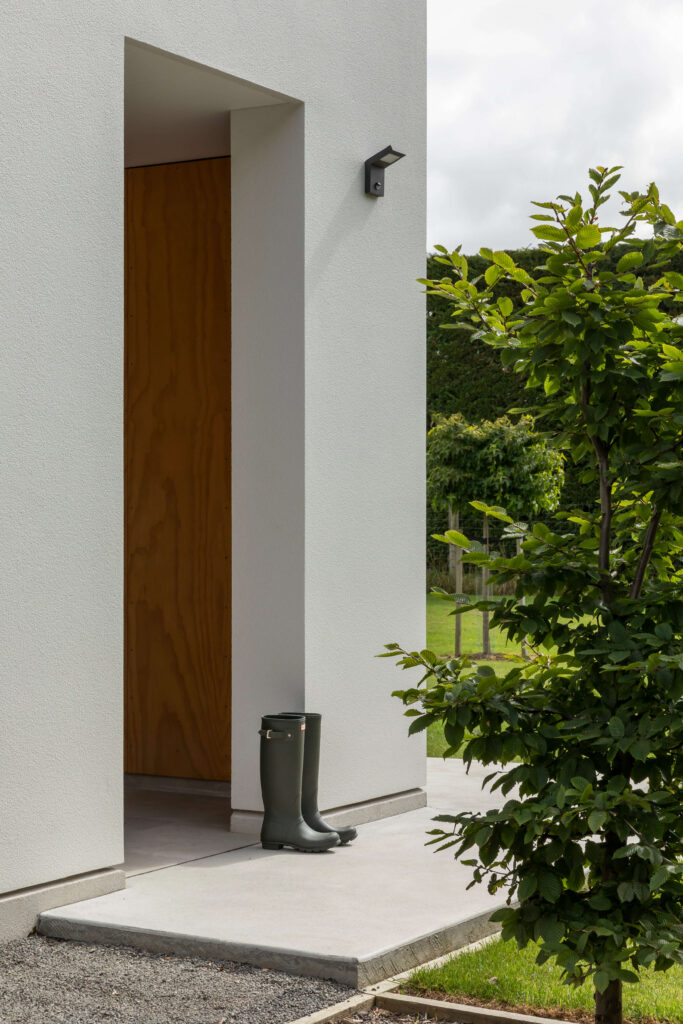Architectural Innovations: Materials Redefining Modern Home Construction
Ultra-modern, technologically advanced construction materials are paving the way for architects, engineers and builders to think outside the previously defined box, allowing them to bridge the gap between creativity and practicality, ultimately resulting in wonderfully dynamic while also highly functional spaces.
With everything from transparent wood through to self-healing concrete, technology is continually pushing construction boundaries, with this construction revolution rapidly changing how and what we build, very much shaping the future of modern architecture.
Building Material Innovation In 2024 And Beyond
Without further ado, let’s dive in and explore some of these fantastic new construction materials, how they are made and their likely impact on the current architectural landscape in 2024 and beyond.
1. Nanomaterials
The use of nanotechnology is revolutionising material science far beyond the limits of what was once deemed possible. Nanomaterials such as Carbon Nanotubes (CNTs) are able to provide unprecedented structural integrity without the need for steel reinforcing and are fast becoming a front runner for strength and durability in the commercial construction arena.
With a tensile strength of up to 100 times greater than steel and with exceptionally lightweight properties, CNTs are ideal for load-bearing structures, ultimately allowing for more intricate structural designs that are stronger, lighter, and more resilient.
2. Self-Healing Concrete
As the name suggests, self-healing concrete is somewhat remarkably able to heal and repair its own cracks. Scientists have been able to reinvent this widely utilised building product using specific bacteria that are able to produce limestone when exposed to moisture.
Substantially prolonging its own lifespan, this innovative material greatly reduces the need for maintenance and repairs or replacement, ultimately extending the durability and longevity of concrete-built structures – which also results in greater cost effectiveness and sustainability!
 3. Transparent Aluminium
3. Transparent Aluminium
Also known as aluminium oxynitride, transparent aluminium is an optically transparent aluminium (made of aluminate powder alloys). Touted as the future of windows, transparent aluminium reduces heat loss while immensely increasing the strength of windows, providing added functionality, greater design freedoms and enhanced security.
Due to current manufacturing and supply costs, transparent aluminium is mostly seen in use in the military and NASA space applications, however, it is obvious the possibilities within the construction industry are quite significant – unbreakable windows anyone?
4. Aerogel Insulation
When it comes to energy efficiency, everyone knows insulation is the key to retaining heat and providing an effective thermal barrier. What sets Aerogel Insulation apart is that it offers a lightweight, low-density insulation option with beyond exceptional thermal properties.
Acting as a super-efficient insulator, Aerogel is increasingly sought after in architectural designs worldwide, improving sustainability and offering more comfortable living spaces in both residential and commercial applications.
5. Biosynthetic Bricks
Helping the construction industry improve its sustainability status, biosynthetic bricks are an interesting addition to material innovation. Created by combining natural waste, bacteria, and binders, these bio-bricks are not only environmentally friendly but also possess additional useful qualities.
These qualities include excellent thermal insulation properties and handling advantages due to their lightweight nature. Bio-bricks therefore, mean a reduced reliance on conventional less environmentally friendly materials combined with the added advantages of the reuse and recycling of existing waste.
6. Transparent Wood
The perfect example of aesthetics meets sustainability, transparent wood has the ability to transform the use of timber in construction as we know it. Created by removing “lignin” (a light-absorbing compound that gives wood its colour) from natural wood, transparent wood retains the strength, durability, and thermal insulation properties of its natural form.
The final product offers up an excellent alternative to glass or plastic that is environmentally friendly, versatile and energy efficient while providing a unique, visually appealing aesthetic.
7. 3D-Printed Building Components
Advancements in 3D printing technology have allowed architects and engineers to efficiently and quickly produce complex building components with a precision and level of customisation previously unseen in the construction industry.
The 3D printing manufacturing process has the advantage of minimal wastage, something that has previously plagued the construction industry when it comes to ongoing sustainability goals. A large part of the waste reduction from 3D printing stems from the ability to form affordable and rapidly produced prototypes of the final product, which can vastly reduce total construction time and building costs by eliminating unforeseen errors and oversights.
8. Cross Laminated Timber
Essentially a large-scale version of plywood, Cross Laminated Timber is formed by layering wood pieces in alternating directions combined with strong bonding agents. This cross-layering process creates a strong, lightweight timber material with additional strengthening properties.
The advantages of Cross Laminated Timber include a lower manufacturing carbon footprint, the associated benefits of off-site prefabrication, reduced construction times and less overall waste. Due to their construction technique, Cross Laminated Timber built structures are also thought to be more earthquake resistant.
9. Sensitive Tiles
When we talk about innovative building materials, it is not necessarily always about seeking beneficial physical properties or sustainability attributes, it can sometimes just be about delivering on aesthetics, which is where products such as what’s known as “Sensi-Tiles” come into play.
These tiles are action-sensitive tiles made with acrylic fibre that reacts to movement, touch, sound or light sources. The optical fibres within the tile “respond” to external stimuli, causing the tiles to light up with various colours on their surface with added effects such as flashing on and off, colour changes etc also possible. Decorating with these types of tiles offers a wealth of new opportunities for responsive design both within architecture and interior design.
 10. Flexible Concrete
10. Flexible Concrete
Flexibility is not a characteristic that tends to be commonly associated with concrete. However, scientists have developed a new concrete product with up to three times the bendability and strength of traditional concrete.
Thanks to the addition of specially developed additives and polymer microfibers that help better distribute the load, this new concrete is as strong as metal when it comes to bending movements which traditionally would result in cracking and breaking. In an industry where concrete is one of the core building materials it is easy to see why advances in its usability could represent significant opportunities for positive change.
11. Carbon Absorbing Bio-Plastics
Carbon-absorbing bio-plastics are another interesting area of development in the construction arena. These special non-toxic recycled bioplastics go beyond the characteristics of regular bio-plastics and are made of ‘biochar’ from organic forest and agricultural waste and are able to actually absorb/capture carbon from the surrounding atmosphere.
Biochar could be used in cladding, facades, furniture, and a multitude of other applications such as additives to bricks and concrete. Plus, and perhaps most importantly, it remains stable without releasing the carbon it has absorbed for thousands of years!
12. Invisible Photovoltaic (Solar Power) Cells
Solar energy panels for renewable energy generation have been around for a long time now, but not everyone wants to mount the associated (and cumbersome) solar panels on their roof. That’s where these invisible photovoltaic cells are able to make all the difference!
Researchers have developed a way to seamlessly blend transparent solar power-generating cells into windows, doors and other materials allowing for entire buildings to effectively become giant solar panels continually producing renewable energy.
The integration of advanced construction materials in architecture continues to evolve, with architects and engineers tasked with incorporating these advancements, moving beyond the traditional constraints, and reinventing standards within the industry. By embracing these technologically advanced materials, architects have the opportunity to create modern-day structures that not only visually challenge the current-day norms but represent new challenges for future generations.

 3. Transparent Aluminium
3. Transparent Aluminium 10. Flexible Concrete
10. Flexible Concrete